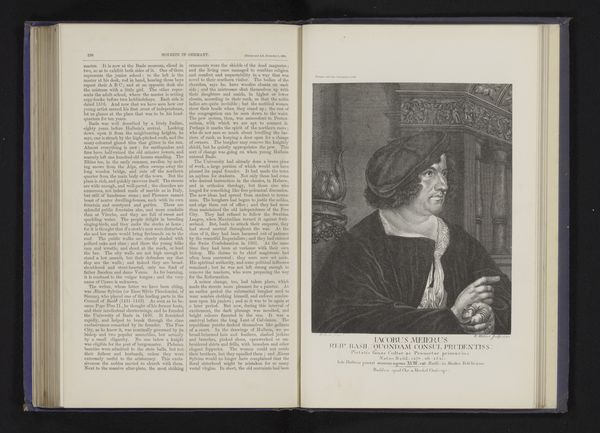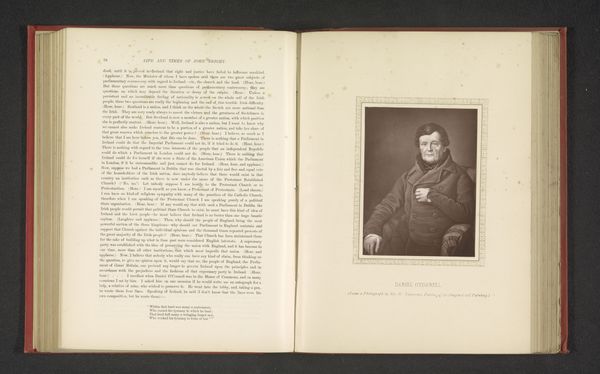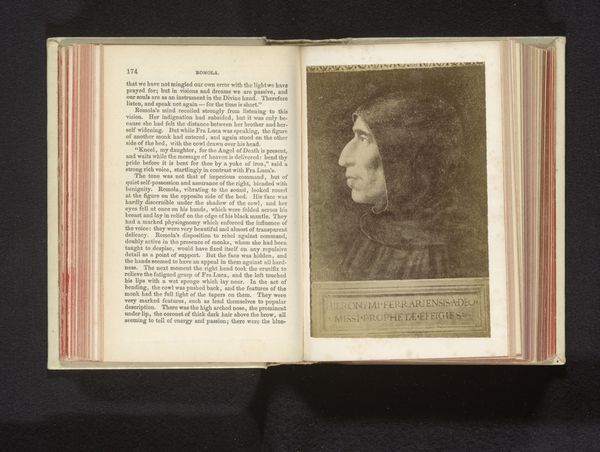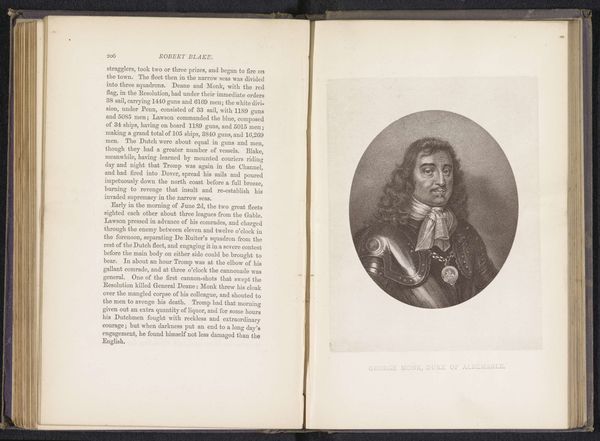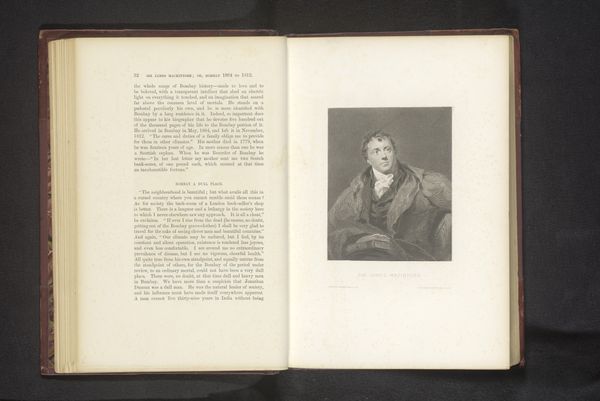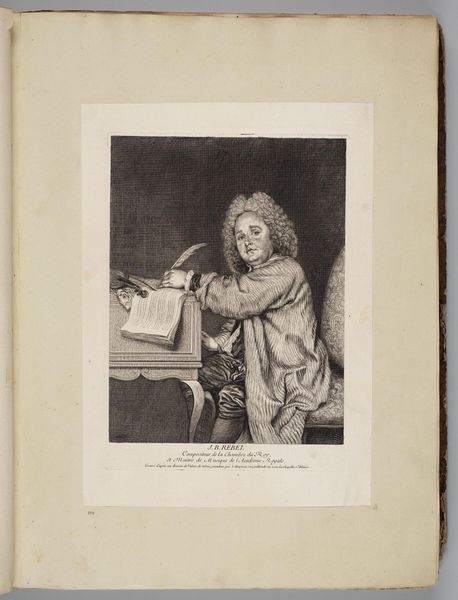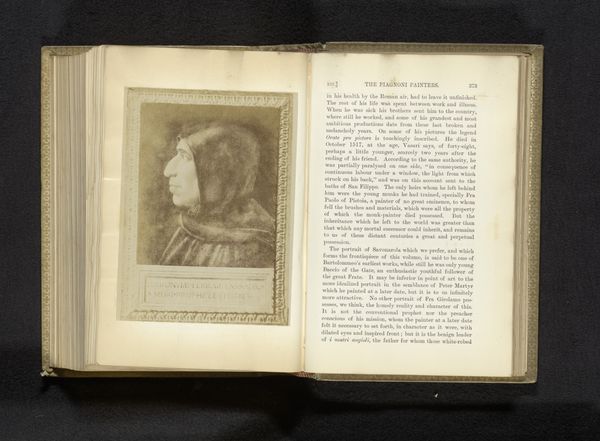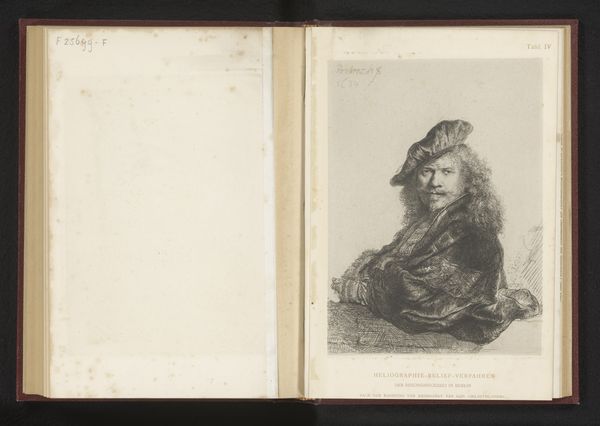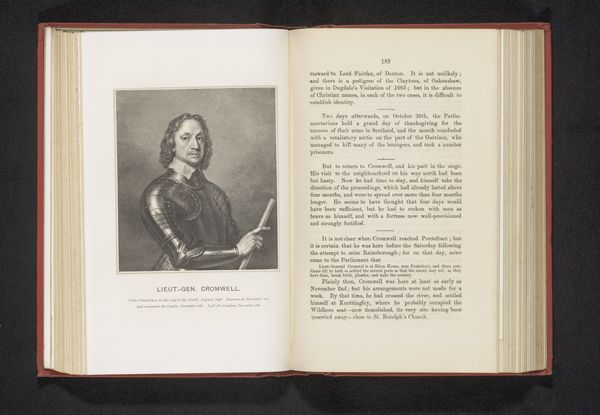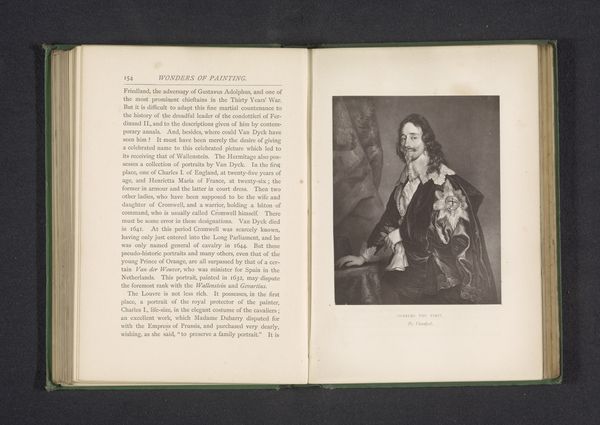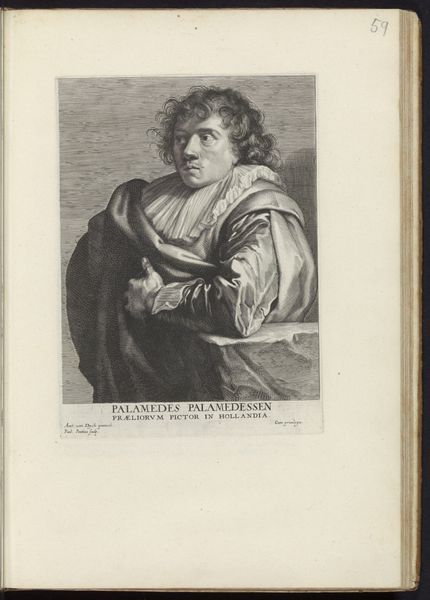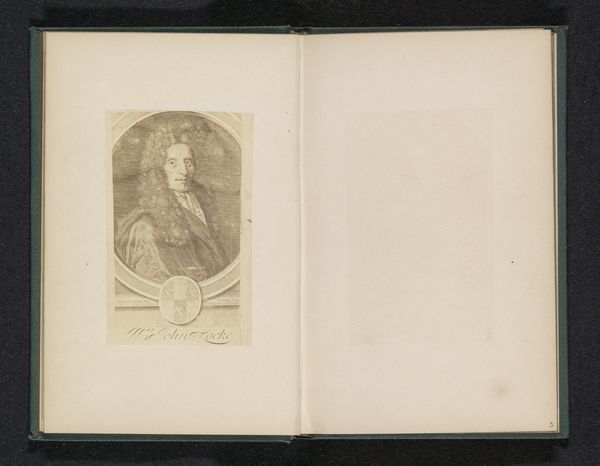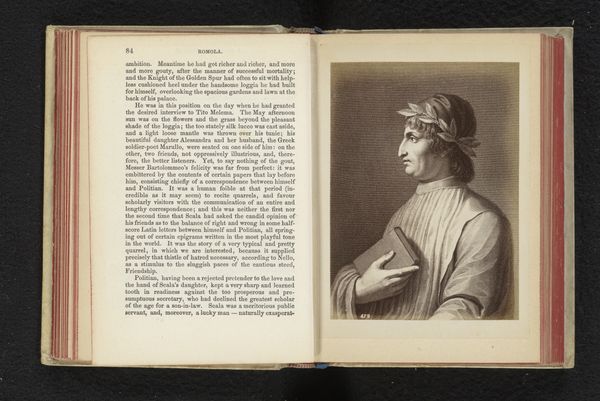
Fotoreproductie van een portret van Willibald Pirckheimer door Albrecht Dürer before 1870
0:00
0:00
print, engraving
#
portrait
# print
#
northern-renaissance
#
engraving
Dimensions: height 174 mm, width 110 mm
Copyright: Rijks Museum: Open Domain
Curator: Let’s spend a few moments with this intriguing piece, a photographic reproduction of Albrecht Dürer’s portrait of Willibald Pirckheimer. The original engraving dates to 1524, but this photo was produced before 1870 and it currently resides here at the Rijksmuseum. What are your initial thoughts? Editor: My immediate reaction is to the figure's presence. He exudes an undeniable confidence, yet his eyes seem weighed down by some unseen burden. It’s an interesting dichotomy. Curator: Pirckheimer, a prominent Nuremberg humanist and a close friend of Dürer, clearly held a position of influence. Dürer masterfully captures the intellectual gravitas of his friend. Consider how printmaking disseminated images, shaping public perception in ways previously unimaginable. Editor: Exactly. And by centering on the male intellectual, the artwork is rooted in its own social constructs: we get a strong sense of Renaissance ideals, but one cannot ignore how the imagery reflects prevailing biases and exclusivity of the time, mainly focusing on men as scholars. How might Dürer’s representation of other figures differ? Curator: A vital point. Examining Dürer’s portraits of women or working-class individuals reveals a very different approach. This portrait isn't just about Pirckheimer; it is about projecting an ideal of erudite masculinity—it makes one wonder: how complicit was Dürer in shaping the image of the ideal man for his contemporaries? Editor: Absolutely, and thinking of the materiality of the print. It provided increased accessibility, although undoubtedly restricted by class and literacy. How does that affect our contemporary consumption, looking at the photographic reproduction of an original print displayed today in a museum setting? Curator: We're layered within systems of reproductions, adding meaning to the various iterations that transmit this work to new publics. And this in itself forms another kind of narrative about value, prestige, and influence. Editor: A fascinating and necessary reminder to question not just what we see, but also the historical and socio-political context in which images are constructed and consumed. Curator: Indeed. Dürer’s portrait of Pirckheimer is far more than just an image of one man; it reflects the intellectual, social, and artistic currents of its time, compelling us to consider it from a multiplicity of vantage points.
Comments
No comments
Be the first to comment and join the conversation on the ultimate creative platform.
